Battle of Hampton Roads (Monitor-Merrimack Overlook)
Introduction
Text-to-speech Audio
Images
An artist's impression of the battle between ironclads.
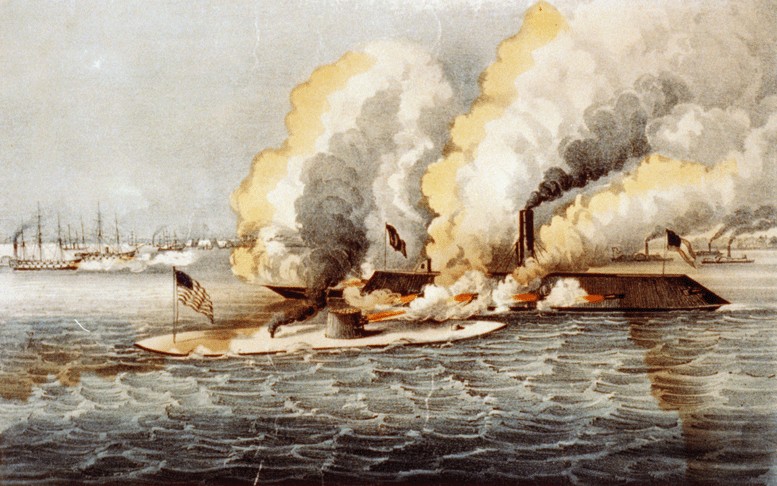
The Monitor after the fight.
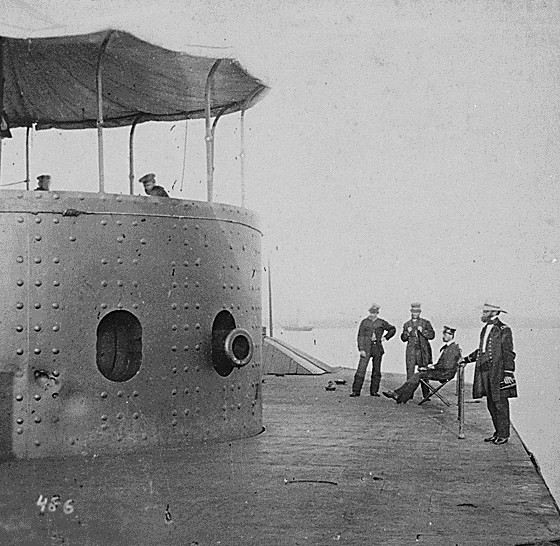
The Monitor and the Merrimack. By famed Civil War artist Mort Kunstler.
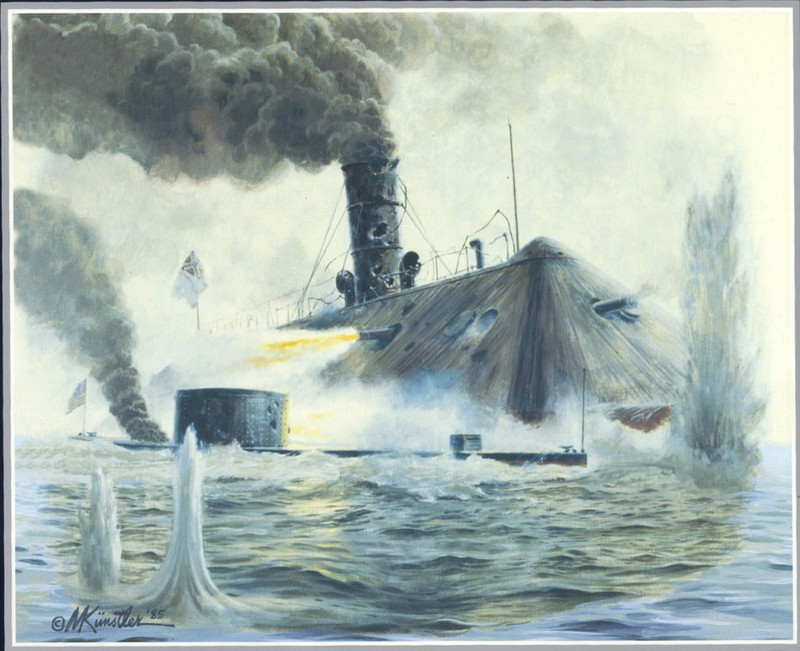
Diorama representation of the interior of the Monitor's gun turret. Constructed by Russ Holm, kit produced by Verlinden.
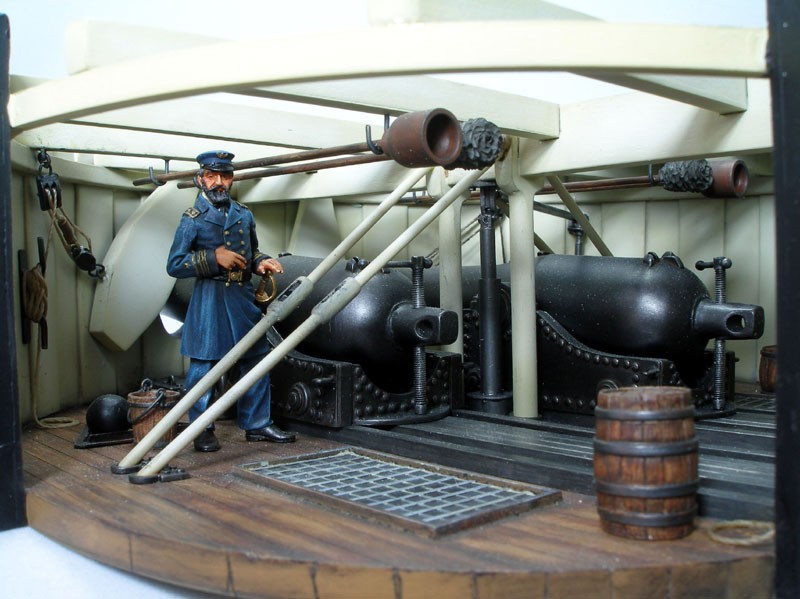
CSS Virginia steams past the flaming USS Congress. Painting by Tom Freeman.
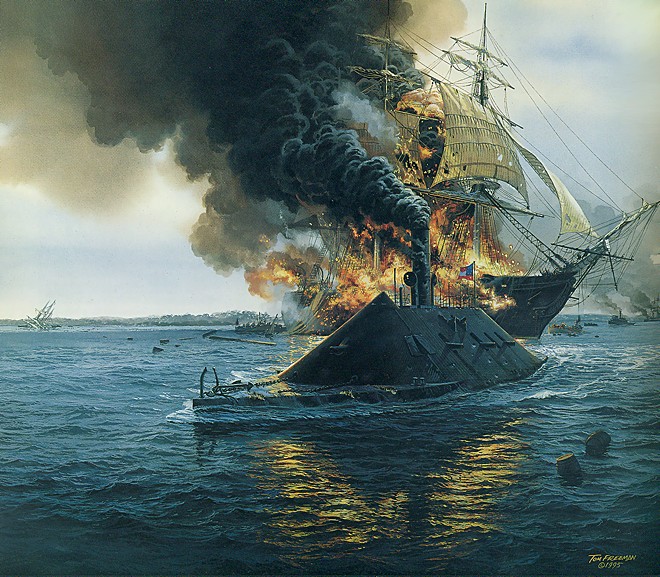
Map of the duel between the Monitor and Merrimack at Hampton Roads.
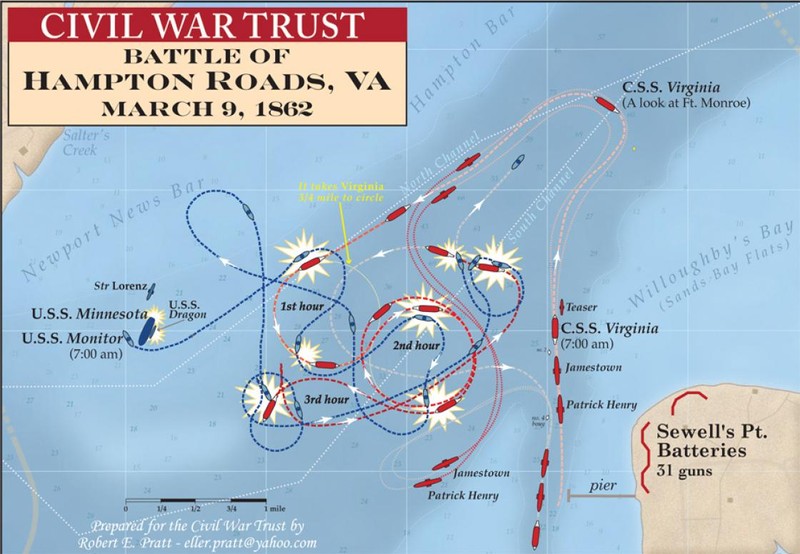
Cross-section view of the USS Monitor.
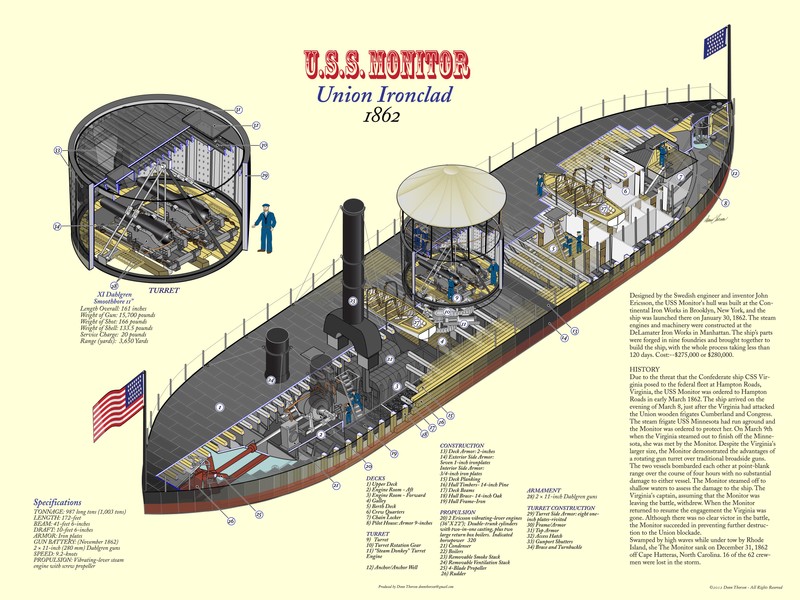
Article from Harper's Weekly, written two weeks after the battle. Celebrates the role of Lt. Worden, USN, commander of the USS Monitor.

Article from Frank Leslie's Illustrated Newspaper, written two weeks after the battle.
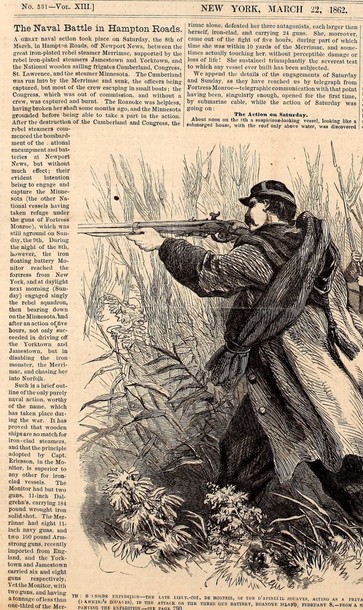
Merrimack engages the Monitor. Contemporary sources described Merrimack as looking like "a submerged house" and Monitor as a "cheesebox on a raft."

Statue of John Ericsson, inventor of the USS Monitor, in New York.
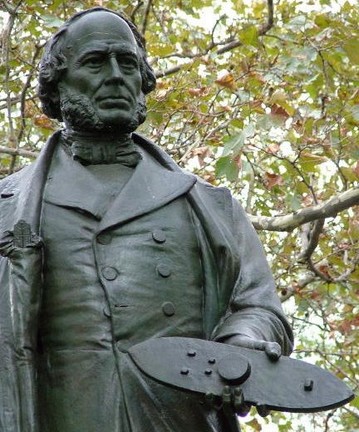
Lincoln's order to begin the blockade of Confederate ports. At the date of issuance, not all states had seceded yet--their names were added later.
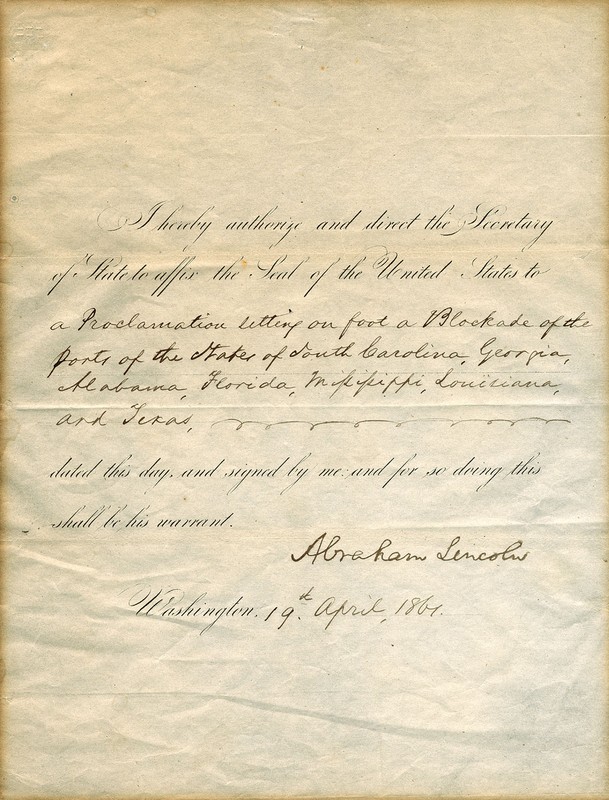
Backstory and Context
Text-to-speech Audio
"Our late sea fight in Hampton Roads is one of the most remarkable and instructive events in the history of modern warfare. It establishes the utter uselessness of wooden ships."
Wooden ships were, in fact, the primary instruments then blockading most ports of the southern Confederate States of America per President Abraham Lincoln's order given April 19, 1861. The goal was to prevent the Confederacy from trading with foreign nations, thereby stifling the flow of war materials and inhibit the seceding states' ability to carry on their rebellion.
Prior to March 8, 1862, the Union blockade around Norfolk had been successful at denying freedom of movement to Confederate ships in the area. But that morning, the complexion of naval warfare changed forever when the CSS Virginia steamed into Hampton Roads to engage the Union squadron stationed there.
Virginia was an ironclad, made of sloped plates of iron over a wooden hull. She had started life as the USS Merrimac (often misspelled "Merrimack"), but had been captured and converted by Confederate engineers. Her new iron hull rendered cannon shot almost completely ineffective against it.
That fateful day in 1862, the newly-minted Virginia engaged three U.S. navy ships. She rammed the USS Cumberland, which sank in minutes with over a hundred sailors on board. The captain of the USS Congress then ordered his ship to run aground, lest it be similarly destroyed.
Virginia moved into easy cannon range and the two exchanged shot for almost an hour, with Congress sustaining heavy damage and Virginia sustaining almost none. At this point, the Virginia fired "hot shot"--cannon rounds heated to a red-hot glow--into the Congress, which caused the wooden ship to catch fire and later explode when the flames reached its magazine. Over a hundred more sailors died that day. The United States Navy would not suffer a bloodier day until Pearl Harbor almost 80 years later.
As night began, the Confederate ships turned their attention to the Minnesota, which was grounded in shallow waters. The Virginia's draft was too deep to allow it to engage the Minnesota, and the increasing darkness prevented the other vessels from aiming properly with their weapons.
The Confederate fleet retreated and made temporary repairs to the slight damage the Virginia had sustained. The next day, the Virginia returned.
But March 9 would be different. The USS Monitor had moved to the area overnight, with the express purpose of preventing the Minnesota's destruction and stymieing the Virginia's crusade to break the Norfolk blockade.
The Virginia cautiously approached the Monitor, not sure at first what the strange vessel was. The Monitor was constructed very differently from ships of the day, with its main deck barely a foot above sea level. Stranger still, atop the deck sat a turret (an innovation in naval engineering at the time), which rotated and housed two 11-pound guns, much larger than any the Virginia carried.
The two vessels exchanged fire for hours, neither able to penetrate the other's defenses. The internal temperature of both vessels increased due to repeated impacts on the iron plates, but the battle finally ended temporarily when a shot hit the Monitor's pilot cabin, temporarily incapacitating the helmsman.
The Monitor retreated to replace its helmsman, and the Virginia believed that it had won the battle. The Minnesota was still aground, but the Virginia was defeated again by her deep draft and could not reach the ship in the falling tides. Virginia was heavily damaged, so it began to steam back to port. Upon returning to its post at the Minnesota, the captain of the Monitor saw his foe retreating and decided that they had won the battle.
Both sides claimed victory. Though the battle was tactically indecisive, the Union blockade remained and continued to choke Southern trade for the duration of the war. For another three years, the Confederate navy would never again come so close to breaking the blockade or making a decisive impact on the war's outcome.
On a global scale, the world was staggered by the military success of ironclad ships, and would soon begin building their own. In less than a decade, ironclad sailing vessels would become the military standard, soon to be followed by dreadnoughts and the arms race that sparked World War I.
Cite This Entry
Egnatoff, Daniel and Kyle Warmack. "Battle of Hampton Roads (Monitor-Merrimack Overlook)." Clio: Your Guide to History. September 11, 2017. Accessed May 5, 2025. https://theclio.com/tour/292/3/reverse
Sources
2. USS Monitor: A Cheesebox on a Raft. Civil War Trust. Accessed September 05, 2017. https://www.civilwar.org/learn/articles/uss-monitor-cheesebox-raft.
3. Battle of Hampton Roads. Civil War Trust. Accessed September 05, 2017. https://www.civilwar.org/learn/galleries/battle-hampton-roads.
4. Bishop, Chris. Drury, Ian. 1400 Days: The Civil War Day By Day. New York, NY. Gallery Books, 1990. 71-72
5. McPherson, James. Images of the Civil War. Avenel, NJ. Gramercy Books, 1992. 48

